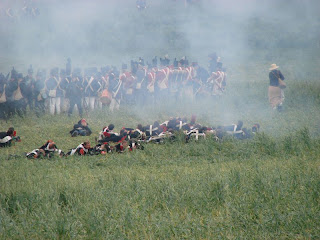
We listen all the time that portions of Holland are below sea level and the Dutch throughout their history have learned to deal with water and managed to create "new land." I thought that this was something of the past and that the issue was settled. What I learned is that this is still an issue and that the Dutch has continued to use all their creativity and ingenuity to deal with the problem. A permanent barrier, was built in the North in the 1930's, the Afsluitdijk (enclosure dam), part of the project called the Zuiderzee Works. This barrier turned the dangerous Zuiderzee (Sea Zuider), a shallow bay of the North Sea in the Northeast of Holland (North of Amsterdam), into the calm Lake IJsselmeer, allowing the creation of 1650 km² of new fertile land.
Later on, as a consequence of the great flood of 1953, a series of storm surge barriers were built in the South, in what is known as the Delta Works (constructions ended in 1997). To prevent the destruction of the fishing industry, these storm surges barriers are movable. For example, there is the De Oosterscheldekering, which looks like a long bridge, allowing therefore the water to flow, but that can be closed if necessary.
The Zuiderzee Works and the Delta Works are considered among the seven wonders of the modern world.
We visited the most amazing of the Delta Works, the
Maeslantkering Stormvloedkreing (
Maeslant Storm Surge Barrier), in
Hoek van Holland. There is an information center,
het Keringhuis, located right beside it. This is a massive barrier that closes if a storm surge higher than 3 m approaches in order to protect the port of Rotterdam, the busiest in the world.
I made a short movie out of the model in the information center that shows how the barrier closes if a storm surges approaches: watch it
here.
The first picture shows the real thing; the second just a model.
More information about the
Maestlant Storm Surge Barrier can be found at
het Keringhuis website.



















































